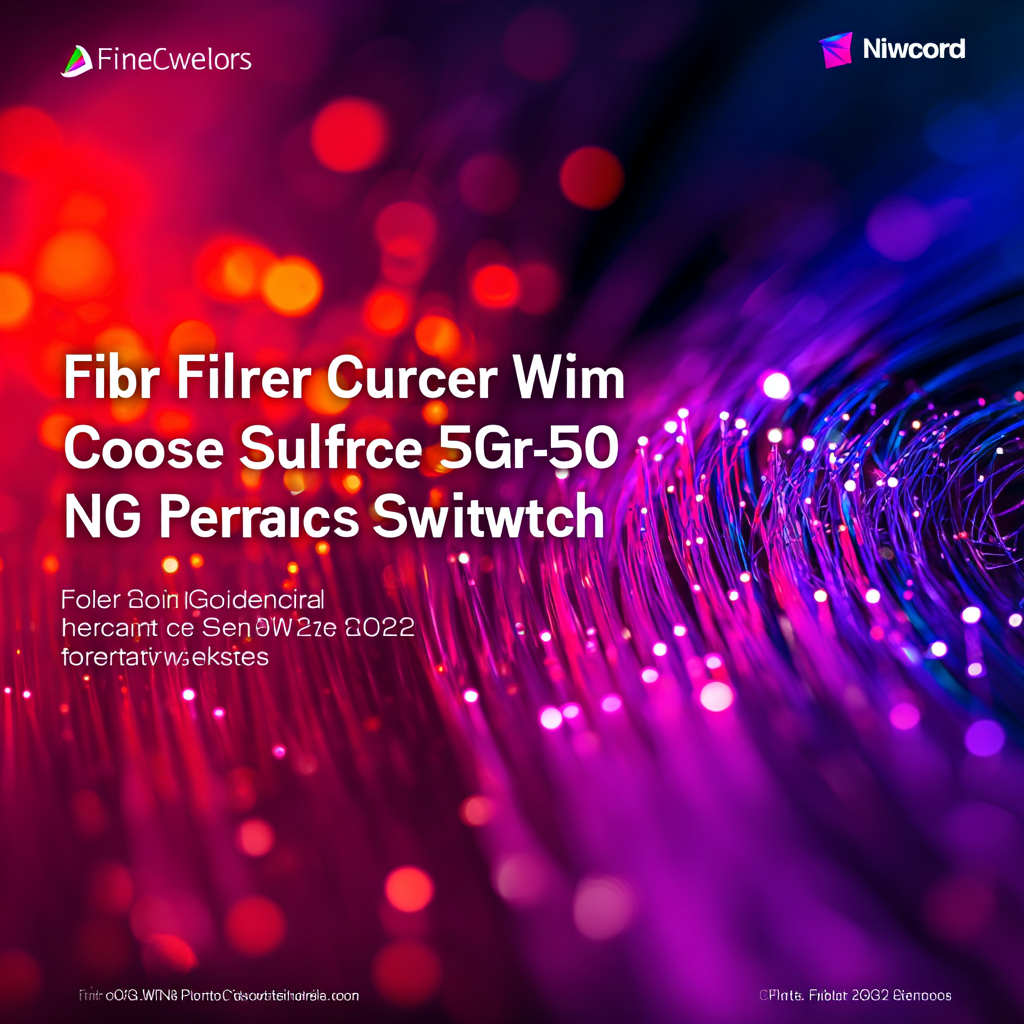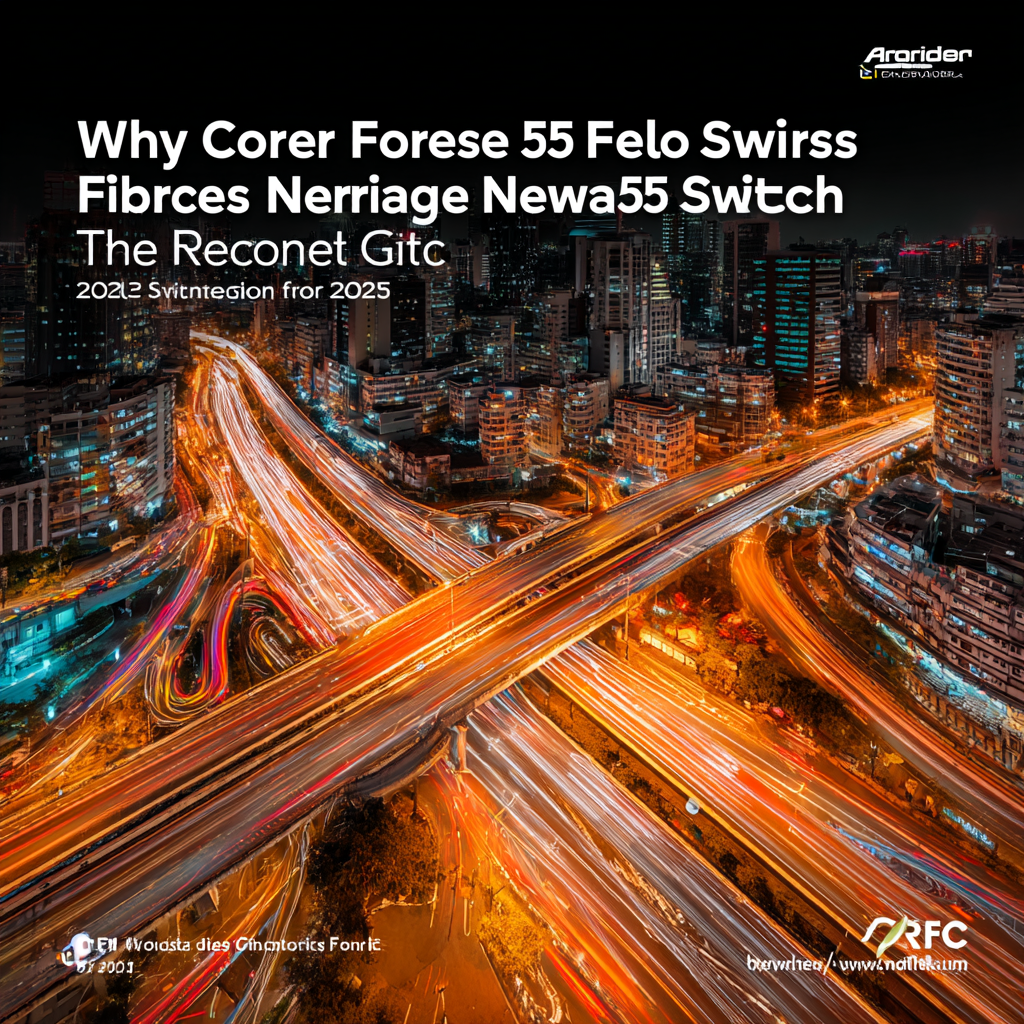
- hasivo@hasivo.com
- Mon - Sat at 7:00AM to 9:00PM
Leave Your Message

In the rapidly evolving landscape of telecommunications, the advent of 5G technology has redefined performance expectations and capabilities, making it imperative for network infrastructure to adapt accordingly. Among the various components that contribute to the efficiency and reliability of 5G networks, Fiber Core Switches have emerged as a critical element. These advanced switches facilitate high-speed data transmission, reduce latency, and support a massive increase in connected devices, all of which are essential for delivering the seamless experiences that consumers and businesses demand in 2023.
As networks transition to 5G, the need for robust and scalable solutions becomes increasingly evident. Fiber Core Switches not only enhance data handling capabilities but also ensure optimal performance for emerging applications, such as the Internet of Things (IoT) and smart city initiatives. Their ability to manage vast amounts of data traffic without degradation of service positions them at the forefront of 5G network architecture. This article will delve into the pivotal role that Fiber Core Switches play in optimizing network performance, their technical advantages, and the future outlook for telecommunications as we fully embrace the 5G revolution.

Fiber core switches play a vital role in enhancing the performance of 5G networks in 2023. As the backbone of these networks, fiber core switches facilitate high-speed data transmission and provide the necessary bandwidth to support the increasing number of connected devices. Their ability to manage large volumes of traffic with low latency is crucial for applications demanding real-time data processing, such as autonomous vehicles and smart cities. By utilizing optical fiber technology, these switches ensure that data can travel over longer distances without degradation, significantly improving overall network reliability.
Furthermore, the integration of fiber core switches into 5G architecture enables network slicing, a feature that allows operators to create multiple virtual networks on a single physical infrastructure. This capability is essential for tailoring services to specific user requirements and optimizing resource allocation. As industries shift towards digitization, the flexibility and efficiency offered by fiber core switches will be integral in meeting various operational demands, from enhanced mobile broadband to ultra-reliable low-latency communication. Their strategic deployment within 5G ecosystems ensures that the networks can evolve to handle future challenges and innovations.
| Parameter | Description | Importance in 5G |
|---|---|---|
| Bandwidth | The maximum rate of data transfer across a network. | Essential for supporting high-speed data services and applications. |
| Latency | The time taken for data to travel from source to destination. | Lower latency is critical for real-time applications like gaming and autonomous driving. |
| Scalability | The capacity to grow and manage increasing amounts of workload. | Necessary to accommodate the growing number of devices and users in 5G networks. |
| Reliability | The ability to maintain performance under expected conditions. | Critical for mission-critical services such as healthcare and transportation. |
| Energy Efficiency | Measures how well a system uses energy without waste. | Important for reducing operational costs and environmental impact. |
Fiber core switches are pivotal in the evolution of 5G networks, providing the necessary infrastructure to support high-speed data transfer and low-latency communication. Key features of fiber core switches, such as their capacity for high bandwidth and advanced routing capabilities, significantly enhance network performance. According to a report by Gartner, the global fiber optic market is expected to reach $8.6 billion by 2025, driven in large part by demand for 5G technology, highlighting the crucial role these switches play in modern telecommunications.
One of the standout features of fiber core switches is their ability to handle massive data traffic with minimal packet loss. They utilize optical fiber technology, which can transmit data over long distances at unprecedented speeds. A study from the International Telecommunication Union found that fiber networks can provide up to 100 Gbps speeds, ensuring that 5G applications such as IoT, smart cities, and autonomous vehicles operate seamlessly.
Tip: When selecting fiber core switches, look for models that offer scalability and support for the latest protocols to future-proof your network. Additionally, consider switches that feature enhanced security protocols to protect your infrastructure from evolving cyber threats. Investing in high-quality fiber core switches can lead to significant long-term cost savings by reducing downtime and optimizing network efficiency.
The emergence of 5G technology has transformed the landscape of mobile networking, necessitating the need for robust infrastructure that can handle the surging data demands. Fiber core switches are a fundamental component in this ecosystem, providing a backbone for high-speed data transmission. According to a recent report by Industry Analysts, the demand for fiber-optic technology is expected to grow at a CAGR of 21% from 2021 to 2026, driven primarily by the rollout of 5G networks that require ultra-reliable low-latency communication.
 Fiber core switches leverage advanced optical technology to facilitate high-speed data transfer with minimal latency, crucial for applications like augmented reality, autonomous vehicles, and instant cloud services. Unlike traditional copper wiring, fiber optics can transmit data over long distances without significant loss, achieving speeds up to 100 Gbps or more, as noted by the International Telecommunication Union. This capability enables telecommunications providers to meet the ever-growing bandwidth needs of consumers and businesses alike.
Fiber core switches leverage advanced optical technology to facilitate high-speed data transfer with minimal latency, crucial for applications like augmented reality, autonomous vehicles, and instant cloud services. Unlike traditional copper wiring, fiber optics can transmit data over long distances without significant loss, achieving speeds up to 100 Gbps or more, as noted by the International Telecommunication Union. This capability enables telecommunications providers to meet the ever-growing bandwidth needs of consumers and businesses alike.
Tips: To optimize the performance of your fiber infrastructure, ensure that you regularly update software and firmware on your switches. Additionally, consider implementing redundant pathways to enhance resilience against failures. Prioritizing network monitoring tools can also help identify bottlenecks early and maintain the efficiency of your 5G network performance.
Integrating fiber core switches into 5G architecture is essential for optimizing network performance in 2023. As the demand for high-speed data and low-latency services increases, fiber core switches are becoming the backbone of efficient 5G networks. According to recent McKinsey benchmarking research, telecom leaders are significantly investing in IT excellence, which includes the deployment of advanced fiber core technologies that facilitate better data handling and improved user experiences.
When integrating fiber core switches, it is crucial to consider scalability and flexibility. Utilizing cloud-native architectures, like those observed in current market leaders, ensures that the network can adapt to varying loads and evolving technologies seamlessly. Additionally, as seen in the expansion of fixed wireless access, engaging in a robust fiber rollout strategy allows for better coverage and connectivity. Companies should also engage with photonics technologies, aiming for cutting-edge solutions that can elevate performance metrics significantly.
**Tips:**
1. Ensure your network design incorporates automated deployment capabilities to streamline integration processes.
2. Regularly monitor performance metrics to identify potential bottlenecks and proactively enhance infrastructure.
3. Invest in training your team on the latest fiber technologies to maintain a competitive edge in the 5G landscape.
As the telecommunications industry evolves, fiber core switching technology is set to redefine connectivity in the realm of 5G and beyond. According to the Global Telecom Outlook FY25 Perspectives Report, the demand for enhanced network performance has surged due to the proliferation of connected devices and data-intensive applications. Fiber core switches play a pivotal role in addressing this demand, enabling faster data transmission rates and lower latency, which are critical for supporting applications like augmented reality, autonomous vehicles, and smart cities.

Looking ahead, several future trends in fiber core switching technology are emerging. With advancements in optical networks and AI integration, operators can expect to see significant improvements in network automation and efficiency. Industry reports highlight that the adoption of AI-driven solutions can streamline operations and optimize resource allocation, propelling the telecom sector toward a more sustainable future. Moreover, as highlighted in the 2025 global telecommunications outlook, the transition to optical fibers not only supports the growth of AI-ready data centers but also provides the infrastructure necessary to maintain competitive advantages in an ever-evolving market.





